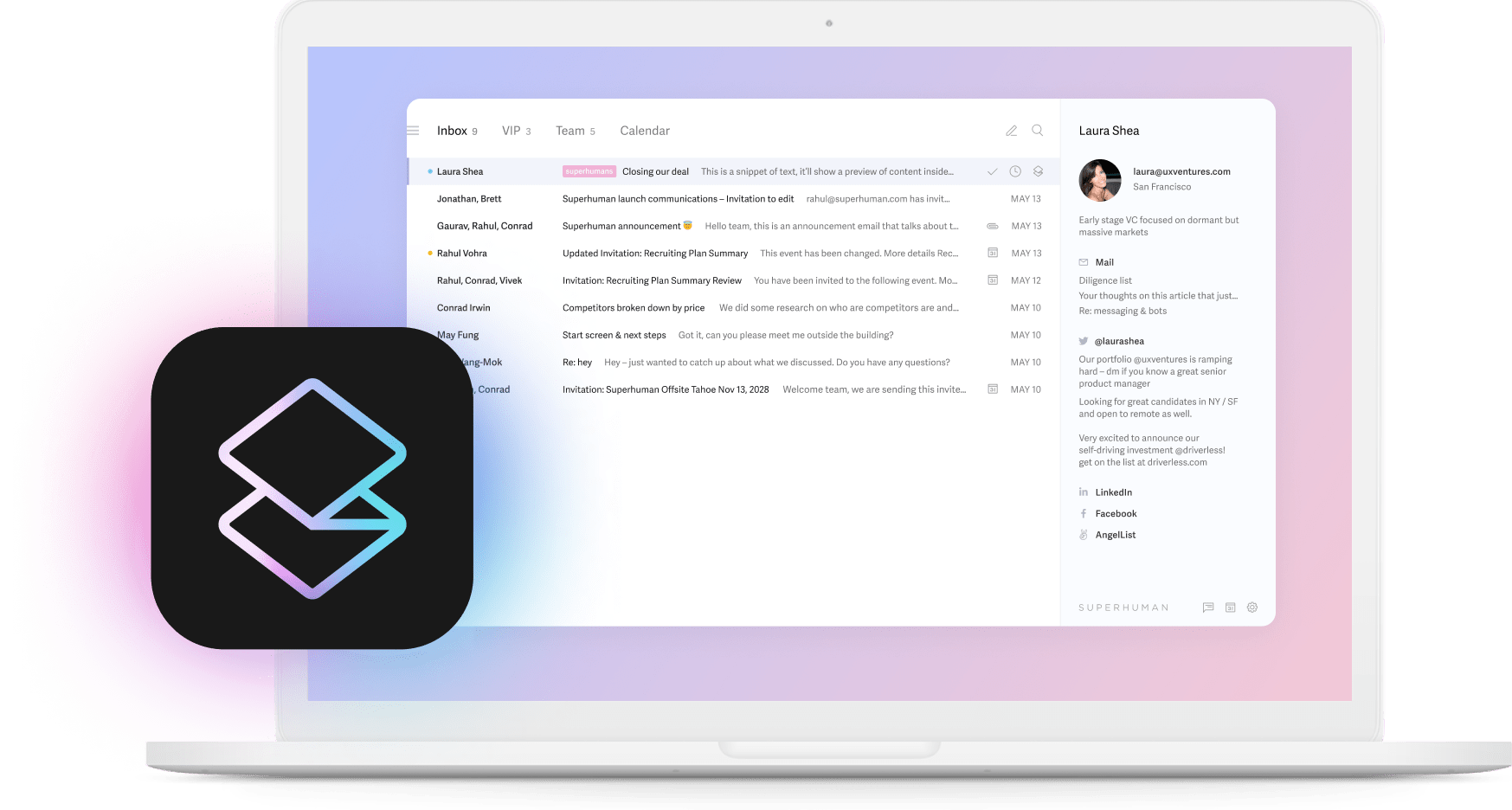
Poor communication costs U.S. businesses $1.2 trillion annually. If you're leading communications at a growing company, you already feel this pain: teams working in silos, messages getting buried in crowded inboxes, and critical updates reaching employees too late to matter.
The shift to remote and hybrid work amplified these challenges. When you can't rely on hallway conversations anymore, you need data to understand how well your teams connect and share information.
This guide covers the 13 most important metrics across five categories: engagement, leadership, collaboration, productivity, and sentiment. You'll learn which metrics matter most, how to calculate them, what benchmarks to aim for, and how to turn measurement into competitive advantage.
What are internal communication metrics?
Internal communication metrics are quantifiable measurements that track how effectively information flows within your organization. These metrics help you understand whether your communication strategies are working, identify bottlenecks, and make data-driven decisions to improve employee engagement and productivity.
Think of these metrics as your communication health dashboard. Just as you wouldn't run a business without tracking revenue, profit margins, or customer satisfaction, you can't optimize internal communication without measuring key indicators like message engagement, response times, and employee feedback rates.
Why internal communication metrics matter
Internal communication metrics transform vague feelings about organizational communication into concrete, actionable data. Without measurement, you're flying blind, unable to prove ROI, identify problems before they escalate, or know which communication channels actually work for your teams.
Organizations that measure and optimize internal communication experience 23% higher profits and 51% lower turnover compared to those that don't. These aren't vanity metrics. They directly impact your bottom line, employee retention, and ability to execute on strategic initiatives.
Core engagement metrics
1. Employee engagement index
Engaged employees solve problems faster, stay longer, and make customers happier. According to Gallup's research on workplace engagement, highly engaged business units experience 14% higher productivity and 23% higher profits.
Formula: (sum of positive responses ÷ total responses) × 100
Global engagement has declined to 21%, but best-practice organizations achieve 70% employee engagement.
Measure engagement through quick pulse surveys. Ask simple questions like "Do you understand how your work helps the company succeed?" and "Would you recommend this as a great place to work?"
Performance benchmarks show that engagement above 40% is considered excellent, while organizations below 30% face significant retention and productivity challenges. For actionable strategies to boost these numbers, explore these employee engagement insights that save your best people.
2. Content engagement rate
This tells you if anyone reads what you send them. You can write the most brilliant strategy update in the world, but if nobody opens it, you might as well have saved your time.
Formula: (total engagements: opens, clicks, shares, comments ÷ total content delivered) × 100
The average open rate for internal emails is 64% to 68%, with click-through rates averaging 6.8%. Top-performing organizations achieve 75%+ open rates and 12%+ click-through rates.
Track email opens, intranet visits, video completion rates, and document downloads. Aim for 64% to 68% engagement on regular updates. Anything below 50% suggests your content may need improvement.
3. Communication tool adoption rate
Buying software is easy. Getting people to use it is hard. This metric shows whether your collaboration platform is solving problems or collecting digital dust.
Formula: (weekly active usage ÷ total provisioned seats) × 100
While 360 million use Teams and 79 million use Slack, only 5% of organizations have the capabilities to fully support these tools effectively.
Teams that fully adopt their communication tools achieve 14% higher productivity and 23% higher profits.
Organizations should target 70% to 80% adoption within three months, but achieving this requires dedicated change management and training rather than simply deploying technology. Tools like ContactMonkey, Culture Amp, and Superhuman Mail help teams measure and improve communication effectiveness. For a comprehensive comparison, see this guide to communication software tools your team can start using today.
4. Message response time
Slow responses kill momentum. When people wait days for simple answers, projects stall and opportunities slip away.
Formula: (time of reply - time sent)
Teams lose approximately 7.47 hours per week due to communication inefficiencies. Fast responses keep work moving and show people their time matters.
Set clear expectations for different message types. Urgent things need acknowledgment within hours. Routine questions can wait a day or two. For strategies on improving response times, check out how AI email reply tools can help teams respond faster while maintaining quality.
5. Information accessibility score
If people can't find what they need to do their jobs, productivity suffers. Organizations that enhance information accessibility see dramatic gains: according to PR Daily's research on AI productivity, search accuracy increased by 300% at Estée Lauder.
Formula: (successful information searches ÷ total search attempts) × 100
Easy access to information speeds up everything from onboarding new hires to closing deals with customers. Poor information architecture creates help desk tickets, delays decisions, and frustrates people who just want to do good work.
Track search success rates and time-to-find information. If search success rates are below 70%, it indicates poor content organization or gaps in your content strategy.
Leadership and feedback metrics
6. Leadership visibility score
When leaders communicate regularly and authentically, employees understand organizational priorities and feel confident in leadership competence.
Formula: (leadership posts + comments + AMA minutes) per month ÷ planned communication opportunities
86% of leaders believe that greater transparency increases workforce trust. When employees can see and hear from leadership regularly, they are 2.8 times more likely to be engaged.
Make leadership communication predictable, not just crisis-driven. Regular video updates, Q&A sessions, and quick wins announcements create touchpoints people can rely on.
Measure authenticity alongside frequency. Leaders who share challenges and uncertainties alongside successes often achieve higher trust and engagement scores.
Superhuman Mail saves teams 4 hours per person every week. Teams respond 12 hours faster and reply to twice as many emails in the same time. Discover more strategies in this guide to email productivity apps and how they help you get more done.
7. Feedback response rate
Real communication goes both ways. If all you do is broadcast messages and nobody responds, you're not communicating.
Formula: (Number of feedback items receiving leadership response ÷ Total feedback items received) × 100
Expected benchmark: 70% to 85% response rate indicates strong communication culture; below 50% signals disengagement risk.
77% of engaged employees feel encouraged to share ideas with their organization, while only 22% of disengaged employees feel the same.
Companies that listen to feedback and act on it keep their best people happy. According to the 2025 Retention Report, poor leadership communication accounts for 63% of all voluntary employee exits.
8. Employee advocacy (eNPS)
This measures whether people like working for you enough to recommend you to their friends. Employee advocacy drives everything from recruitment to reputation to customer trust.
Formula: %Promoters - %Detractors
According to AIHR's analysis of eNPS benchmarks, clear performance tiers exist: scores below 0 indicate poor performance, 0 to 10 represents average performance, 30 to 50 shows good performance, and above 50 demonstrates excellence.
When employees are engaged and aligned with organizational messaging, they naturally become ambassadors for the company. According to Gallup's research on customer retention, engaged customers represent a 23% premium in share of wallet and profitability.
Ask the simple question quarterly: "How likely are you to recommend this company as a place to work?" Track the trends over time to identify what moves employees from neutral to promoter status.
Collaboration and productivity metrics
9. Cross-team collaboration frequency
Siloed communication systems destroy organizational effectiveness. This metric shows whether your communication structure connects different parts of your organization.
Formula: (number of cross-team communications + shared projects + interdepartmental meetings) ÷ total team communications
Teams that collaborate across boundaries solve problems faster and build better products. When teams operate in isolation, you get duplicated work, conflicting priorities, and customers who feel the disconnection.
Organizations with effective cross-functional communication experience 14% higher productivity and stronger outcomes on strategic initiatives. For practical approaches to improving team coordination, explore this team email collaboration guide that can help boost productivity across your organization.
Look for teams where communication breaks down across functional boundaries. Breaking down silos requires deliberate effort to foster transparency and establish clear information-sharing channels.
10. Productivity gains (time saved per employee)
Time savings prove whether your communication improvements help people work better.
Formula: Average minutes saved per employee per week through communication improvements
According to HBR's research on time savings from generative AI, AI communication tools enable employees to complete tasks 40% faster, with technical communication tasks showing 56% time reductions.
Real time savings show up in shorter project cycles, fewer meetings, and less frustration from information hunting. Boston Consulting Group's internal deployment resulted in time savings equivalent to 13 full-time employee positions.
Measure baseline time spent on communication tasks, then track improvements after implementing new tools or processes. Calculate the financial impact by multiplying time savings by average hourly costs.
11. Turnover and retention correlation
Communication quality directly affects who stays and who leaves. According to Gallup's workplace research, organizations with effective communication experience 51% lower turnover.
Formula: Analyze engagement scores versus turnover percentages across departments and tenure groups
Keeping good people saves massive amounts of money and preserves knowledge that took years to build. According to McKinsey's research on employee value, employee disengagement and attrition can cost a median-size S&P 500 company between $228 million and $355 million annually.
The turnover correlation is particularly pronounced among high performers. Track turnover rates by performance level, not just overall percentages. If your top performers are leaving at higher rates, communication failures are likely a contributing factor.
Advanced measurement metrics
12. Message clarity and comprehension rate
Sending messages is easy. Ensuring people understand them correctly is hard. This metric measures whether your communications convey the intended meaning or create confusion.
Formula: (Follow-up surveys on message comprehension ÷ Total messages sent) × 100
Poor message clarity creates cascading problems: misaligned project work, incorrect customer communications, and frustrated employees who waste time seeking clarification.
Measure comprehension through brief follow-up surveys, task completion rates, or error rates following communications. Clear messages should result in fewer clarifying questions, faster implementation, and fewer mistakes. For practical templates that improve clarity, see these internal email examples that actually work.
13. Crisis communication response time
When urgent situations arise, communication speed can determine whether you contain a problem or watch it spiral out of control.
Formula: Time elapsed from crisis identification to complete employee notification
Crisis communication reveals the true strength of your communication structure. Organizations with robust systems can reach all employees within hours. Organizations with weak systems take days or rely on informal networks that create confusion.
Track both speed and effectiveness of crisis communications. Develop communication templates, approval processes, and distribution mechanisms that balance speed with accuracy. Learn how AI in enterprise communication can help teams respond faster during critical moments.
How to measure communication ROI
According to Forrester's analysis, effective internal communication platforms deliver 375% ROI over 3 years with payback periods under 6 months.
Calculate your communication ROI using this formula:
(Engagement increase × 23% profit improvement) + (Retention improvement × average replacement cost) + (Productivity gains × average salary costs) - Communication platform costs
According to Deloitte's research on employee experience, workers who are satisfied with communication are approximately twice as productive as dissatisfied workers. Additionally, 68% of organizations that increased investment in internal communications reported measurable improvements in employee retention.
Organizations achieving highest ROI measure business outcomes rather than activities, engage leadership early in measurement design, and maintain continuous improvement cycles based on data insights.
Remote and hybrid work considerations
Among U.S. employees with remote-capable jobs, 52% work hybrid. Organizations with human-centric hybrid work environments are 3.8x more likely to see high employee performance.
Key metrics for remote and hybrid teams
- Asynchronous communication effectiveness: Response quality for non-real-time communications
- Information equity: Whether remote workers receive critical information at the same quality as office-based workers
- Cross-location collaboration: Project outcomes involving mixed remote/office teams
- Meeting effectiveness by format: Comparing outcomes from in-person, hybrid, and virtual meetings
The hybrid communication challenge stems from managing multiple communication contexts simultaneously. Successful hybrid strategies provide communication equity across all working arrangements. For strategies on managing your inbox effectively in hybrid environments, see this guide on how to manage your email inbox.
Getting started with measurement
Most organizations try to implement too many metrics at once and get overwhelmed. Start with 3 to 5 metrics that directly address your biggest communication pain points, then expand your measurement system as you build capability.
Priority implementation sequence:
- Week 1 to 2: Establish baseline measurements for employee engagement and content engagement rates
- Week 3 to 4: Implement feedback volume tracking and response time measurement
- Month 2: Add tool adoption rates and leadership visibility scoring
- Month 3: Introduce advanced metrics like cross-team collaboration and information accessibility
- Month 4+: Develop ROI calculations and business impact correlations
Choosing the right metrics for your organization:
Not every metric matters equally for every organization. Choose metrics based on your specific challenges and strategic priorities:
- If employee retention is your biggest concern: Prioritize turnover correlation, eNPS, and feedback response rates
- If productivity is lagging: Focus on response times, information accessibility, and time saved per employee
- If leadership alignment is weak: Track leadership visibility, message comprehension, and cross-team collaboration
- If remote work is creating silos: Measure information equity, asynchronous communication effectiveness, and digital presence indicators
Start with metrics that directly address your organization's pain points. Once you establish baselines and see improvements, expand into additional measurement areas.
Common challenges to avoid
The biggest obstacles to successful measurement include data fragmentation across multiple platforms, survey fatigue from over-measuring, tracking vanity metrics instead of business outcomes, lack of industry benchmarks for context, and leadership skepticism about measurement value.
Overcome these by implementing centralized dashboards, limiting surveys to quarterly intervals, focusing on outcome-based metrics tied to business goals, comparing against industry benchmarks from sources like ContactMonkey and Gartner, and building business cases that connect communication metrics to financial outcomes.
Turning metrics into competitive advantage
Most companies treat internal communication like a necessary evil instead of a competitive weapon. Companies with effective communication strategies show 23% higher profits and 51% lower turnover.
Organizations that measure and optimize internal communication systematically outperform those that don't. Start with whichever metrics address your biggest pain points today. You don't need to track everything at once.
Implementation priorities:
- Move beyond activity metrics and focus on behavioral change and business outcomes
- Implement formal frameworks for measurement
- Prioritize business alignment over generic communication activity
- Create closed-loop systems that ensure measurement leads to actionable improvements
- Invest in proper tools that enable better communication
The question isn't whether you can afford to implement these metrics. It's whether you can afford not to.
How Superhuman Mail helps teams communicate faster
Several metrics in this guide tie directly to email: content engagement rates, message response time, and productivity gains all depend on how efficiently your team handles their inbox.
Superhuman Mail helps teams save 4 hours per person every week. Teams respond 12 hours faster and handle twice as many emails in the same time, which directly impacts the response time and productivity metrics that drive business results.
Features like Split Inbox automatically prioritize important messages so critical updates don't get buried. Auto Summarize helps teams quickly grasp context without reading entire threads. Instant Reply generates draft responses that match your voice, so you can move through routine messages faster and focus on communication that matters.
If improving response time and reclaiming productivity are priorities for your team, try Superhuman Mail today.






